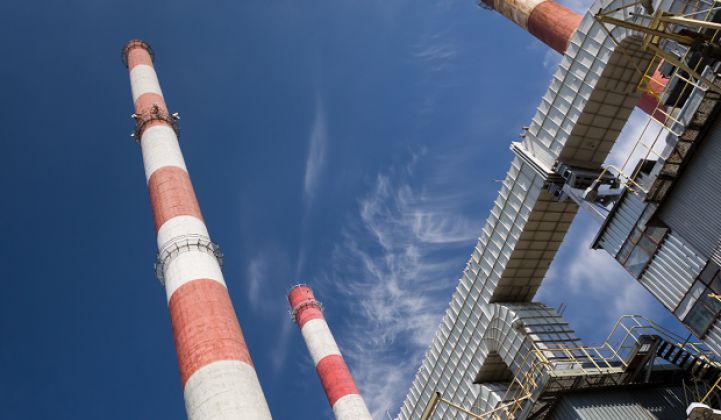What method of distributed electricity generation is energy-efficient, cost-effective and well-established in the U.S.?
More so than wind or solar, or a combination of them with storage, it is actually co-generation, or combined-heat-and-power (CHP) systems, which makes up 8% of the country’s electric generation capacity today.
While not headline-grabbing like the renewable side of distributed generation, the CHP market has been undergoing a quiet but significant transformation of its own.
CHP can scale to sites as large as an industrial park or as small as a commercial office. The most significant market growth for CHP occurred between 1970 and 2000, when the U.S. manufacturing sector was thriving and interconnection standards were introduced. After 2000, overall market growth slowed down dramatically due to a manufacturing slump and new regulatory uncertainties in the energy markets.
FIGURE: Three Phases of CHP Growth

This trend has generally continued to this day, as non-industrial customers now make up the bulk of new installations. Within it, the sector that has implemented CHP systems faster than any other customer type is -- perhaps surprisingly -- the multifamily residential building owner, with a 46 percent increase over five years.

Why multifamily buildings? And why now?
For Roosevelt Landings, a 1,003-unit multifamily building in New York City, the motivation to install a CHP system was twofold -- for grid resiliency and energy savings. Hurricane Sandy had caused a blackout among a third of its apartments when an underground electrical room flooded. The new CHP system keeps critical systems on during power outages, and is located on the 21st floor of the property's tallest building so that residents can access hot water even when the grid is down. Three 100-kilowatt CHP modules together generate 300 kilowatts of electricity and 2.1 million BTU per hour of domestic hot water, equivalent to 15 percent of the building’s electrical and 40 percent of its hot-water needs.
Similarly, another multifamily building on East 24th street in Manhattan will install a 750-kilowatt CHP facility this year. “The co-generation project made sense for our building -- saving money, improving resiliency and raising comfort,” according to a board member at the building. New York City Energy Efficiency Corporation (NYCEEC), which financed both of these building projects, estimates that the East 24th Street building will save an estimated $400,000 in energy costs per year, reducing total building-related energy production by 36 percent and lowering carbon emissions by 18 percent.
Another trend that may spur multifamily building activity even further is the micro-CHP. A small 5- or 10-kilowatt micro CHP has a small enough footprint -- less than 4 feet wide and 2 feet deep -- to fit almost anywhere, and still provide sufficient money savings and grid security for a small multifamily building. The NYSERDA CHP Incentive Program was updated just last week to include systems less than 50 kilowatts under its eligibility criteria.
Regarding micro-CHPs and multifamily buildings, “I think it’s a game-changer. We’ve just financed five CHP systems with many more in the pipeline. The landscape is changing,” said Posie Constable, director of business development at NYCEEC, which is a nonprofit finance company dedicated to building-scale clean energy, ranging from CHP and energy efficiency to fuel conversions and passive homes.
***
For more information, see Mei's full report here.



